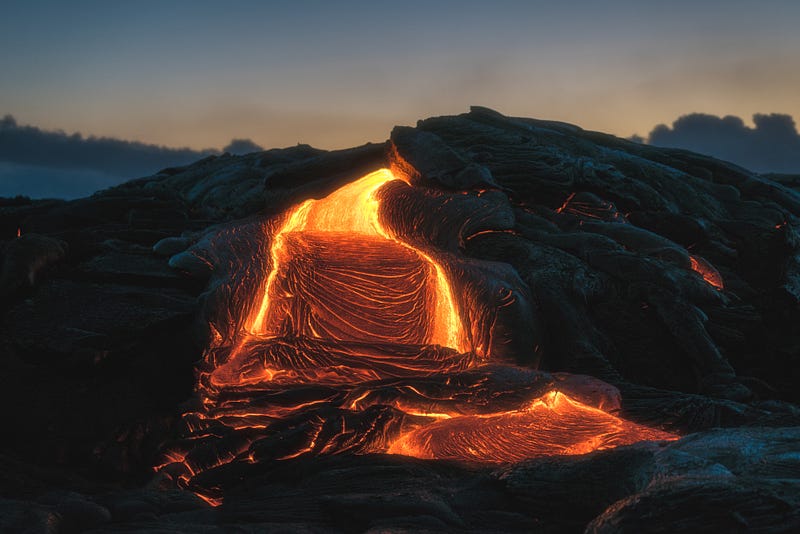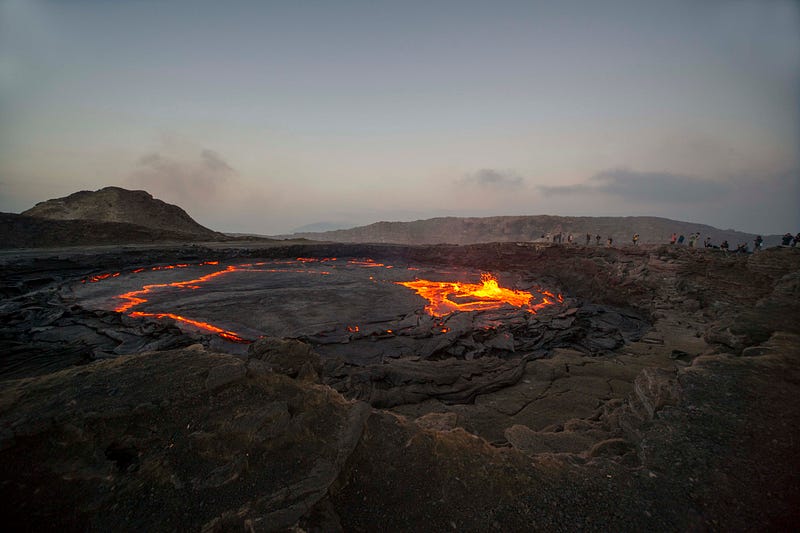Secrets of Supervolcanoes: Nature's Hidden Giants Unveiled
Written on
Understanding Supervolcanoes
The immense destructive capacity of supervolcanoes far surpasses that of typical volcanoes. These slumbering giants remain largely unknown to the general public.

Photo by Julien Millet on Unsplash
When a supervolcano erupts, the aftermath can be catastrophic. For instance, the eruption of Mount St. Helens in 1980 released lava and ash into the atmosphere, amounting to about one cubic kilometer. In contrast, supervolcanoes have previously erupted with volumes reaching up to 5,000 cubic kilometers. Given that the Mount St. Helens disaster claimed 57 lives and devastated the surrounding landscape, it’s alarming to consider the potential destruction of an eruption thousands of times more powerful.
What Defines a Supervolcano?
Supervolcanoes are distinct from the volcanoes we often learn about in school. One defining feature is that they lack a prominent eruption cone. While traditional volcanoes are easily recognizable, supervolcanoes typically appear as expansive landscapes, only identifiable from aerial images.
This is due to their unique eruption mechanism. Supervolcano magma chambers extend over large underground areas. Take the Yellowstone supervolcano, for example, which spans roughly 40 by 60 kilometers. Over time, pressure builds in these chambers until the ground above them collapses, forming a caldera instead of a traditional volcanic cone. Hence, in Yellowstone, there’s no visible crater—the entire park itself is the crater.
Currently, geologists have identified about 20 of these dormant giants, and while their eruption intervals can span several hundred thousand years, the global repercussions of their eruptions are significant. Geological records indicate that some of these eruptions coincide with major extinction events.
The global climate can shift drastically following a supervolcano eruption. The enormous amounts of ash released into the stratosphere can block sunlight for extended periods, leading to widespread agricultural failures and severe food shortages. For example, the Toba supervolcano's eruption approximately 75,000 years ago is believed to have reduced the human population to a mere few thousand survivors, as suggested by studies of the human gene pool.
Predicting Future Eruptions
Determining how supervolcanoes will behave in the future remains challenging. The average frequency of past eruptions does not necessarily predict future activity. Furthermore, scientists are still trying to understand what early warning signs may indicate an impending eruption. Currently, increased activity has been observed in some supervolcanoes, hinting at rising magma chamber pressure, but it remains unclear whether this signifies an imminent eruption.
Yellowstone: The Most Notable Supervolcano
The Yellowstone National Park, located in Wyoming, is a stunning natural site that attracts millions of visitors annually, who are captivated by its remarkable landscapes. The park features numerous hot springs and geysers, clear indicators of the volcanic activity beneath.
For many years, the origins of this volcanic activity were a mystery, as no visible volcano was apparent. It was only through aerial surveys that the caldera was discovered and recognized as the volcanic source.
The last major eruption from Yellowstone occurred roughly 600,000 years ago, with significant eruptions statistically happening every 600,000 to 650,000 years over the last two million years. This means that we may be overdue for another significant eruption.
European Supervolcanoes: The Phlegraean Fields
In Europe, the last major eruption of a supervolcano occurred around 39,000 years ago in what is now the Gulf of Naples. This area, known as the “Phlegraean Fields,” had an eruption force a hundred times greater than that of Vesuvius, which famously buried Pompeii.
Naples lies perilously close to this supervolcano, which spans over 150 square kilometers. In the event of an eruption, it would likely devastate not only Naples but also much of Europe. The last major eruption resulted in a three-degree Celsius drop in global temperatures and a six-degree drop in Europe, highlighting the potential severity of such climate changes.
The Phlegraean Fields, like other supervolcanoes, will eventually erupt again; the only uncertainty is whether it will be tomorrow or in tens of thousands of years.
Should We Fear an Eruption?

Photo by Pierre-Yves Burgi on Unsplash
The scientific community is divided on the likelihood of an imminent supervolcano eruption. While historical eruption patterns can provide some insights, they may not be reliable indicators of future events.
Observations of geological activity, such as those seen in Yellowstone, have sometimes shown sudden changes that later subsided without resulting in an eruption. This unpredictability makes it difficult to assess the true threat posed by supervolcanoes.
For the average person, the risk of a supervolcano eruption can feel overwhelming, but it shouldn’t prevent us from living our lives. Just as we acknowledge the potential dangers of asteroid impacts, we must also recognize the threat posed by supervolcanoes without allowing fear to dictate our daily actions.
For more in-depth information on supervolcanoes, you can visit Wikipedia.
Want More Insights?
Subscribe here to receive weekly emails and stay updated with my articles: http://bit.ly/ReneJunge